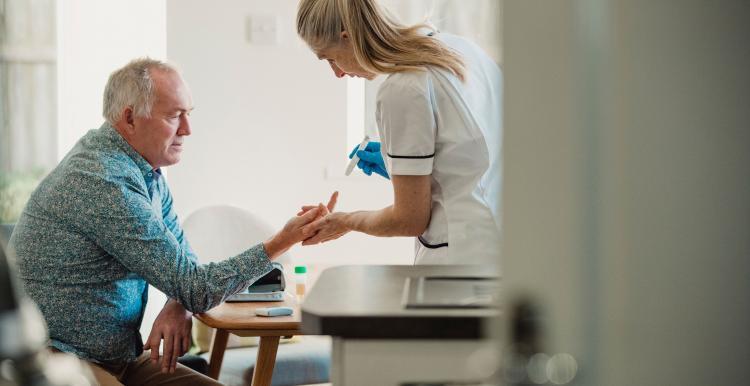NICE publishes first national guidance on diagnosing and monitoring diabetic retinopathy

What is diabetic retinopathy?
Diabetic retinopathy is a complication of diabetes, caused by high blood sugar levels damaging the back of the eye (retina). It can cause blindness if left undiagnosed and untreated. However, it most often affects people who have had diabetes for a long time.
Treatments for diabetic retinopathy
Treatment for diabetic retinopathy is only necessary if eye screening detects significant problems that mean your vision is at risk.
The main treatments for more advanced diabetic retinopathy are:
- laser treatment
- injections of medication into your eyes
- an operation to remove blood or scar tissue from your eyes
Read more about the treatment of diabetic retinopathy.
What are NICE guidelines?
NICE guidelines are evidence-based recommendations for health and care in England and Wales. They help health and care professionals to prevent ill health, promote good health and improve the quality of care and services.
NICE guidelines for diabetic retinopathy
What does it cover?
The guideline covers managing and monitoring diabetic retinopathy in people under the care of hospital eye services and includes a number of key recommendations for:
- Managing diabetes to support best eye care
- Cataract surgery for people with diabetic retinopathy
- Non-proliferative and proliferative diabetic retinopathy
- Diabetic macular oedema.
However, the guideline does not include areas covered by the NHS diabetic eye screening programme such as routine annual screening.
Why are the guidelines important?
Nice guidelines for diabetic retinopathy are important for ensuring:
- You keep the best possible vision for the longest possible time.
- Your healthcare team helps you understand how closely managing your blood sugar level, blood pressure and blood lipids can help you keep your eyes in good health.
- Your eyes are checked regularly for any problems, to stop your eyesight from getting worse and, if possible, improve it.
- Treatment options are discussed with you to agree the option that suits you best. If appropriate, observation (no treatment) is discussed with you too.
- Your healthcare team helps make it easier to get the treatment that is best for you, in the way that works best for you. This means they take into account things like your work or caring commitments, personal situation or disability.
- The different healthcare professionals involved in your care share information with each other about your eye health to reduce any risk to your sight such as getting the right medication after cataract surgery.
What are some of the key recommendations?
- Offering patients with proliferative diabetic retinopathy and who are receiving laser-based treatment anti-VEGF, a medicine that helps to stop the growth of abnormal blood vessels.
- Offering patients with diabetic retinopathy, including patients with macular oedema, advice on long-term treatment management and the long-term benefits for their vision.
- Before cataract surgery, the surgeon should obtain information about your current diabetic eye disease status. The surgeon can then use this information to tailor the surgery, post-operation medication and follow-up to your condition and needs.
- Hospital eye services should monitor your disease progression if you have non-proliferative retinopathy and are not currently having treatment and have not previously had treatment.
Originally published on: Overview | Diabetic retinopathy: management and monitoring | Guidance | NICE
